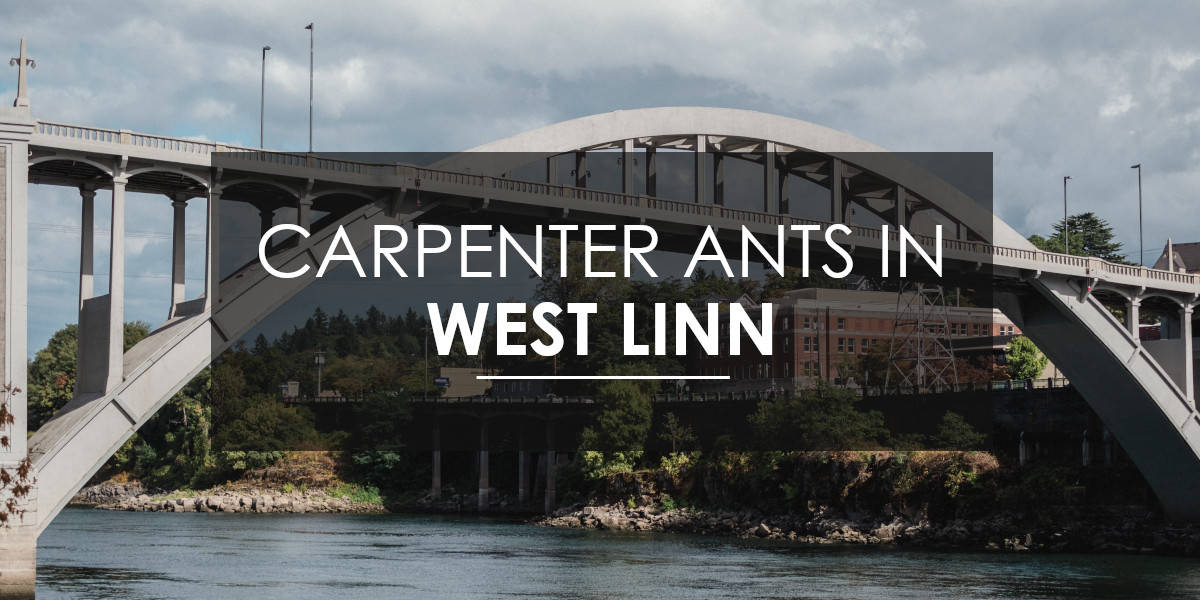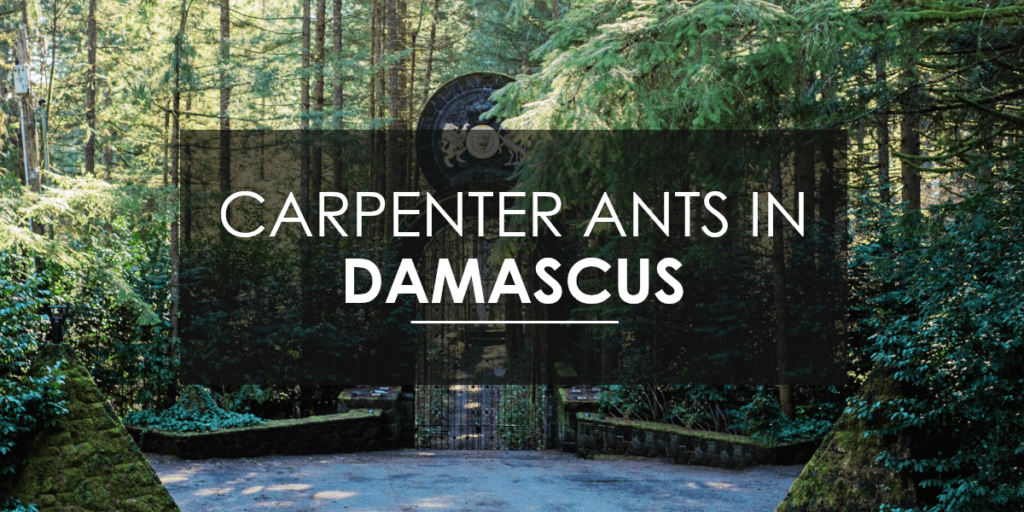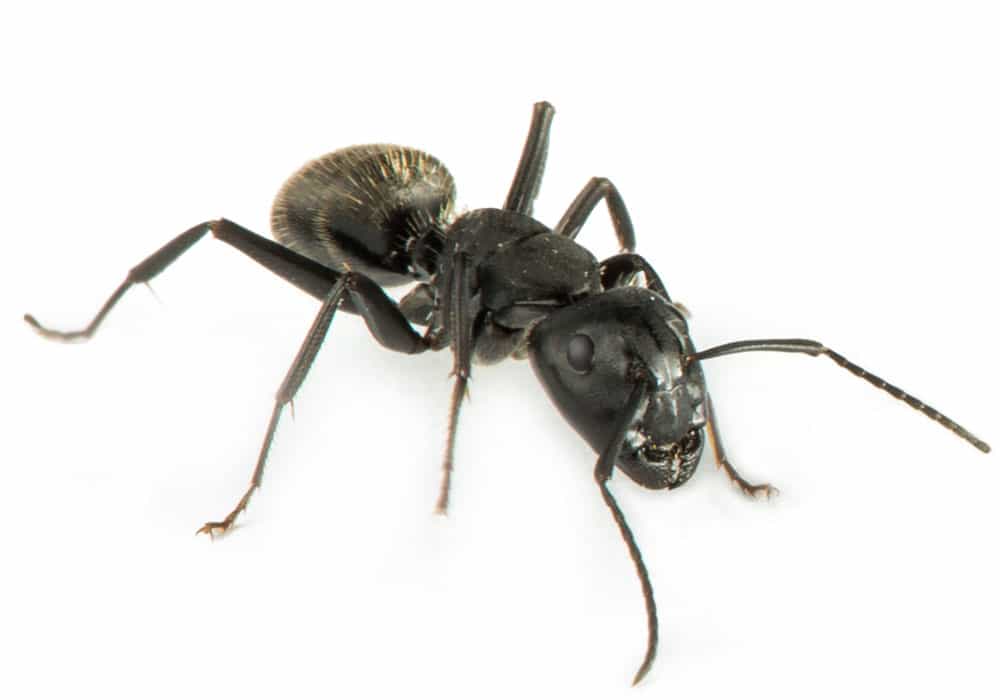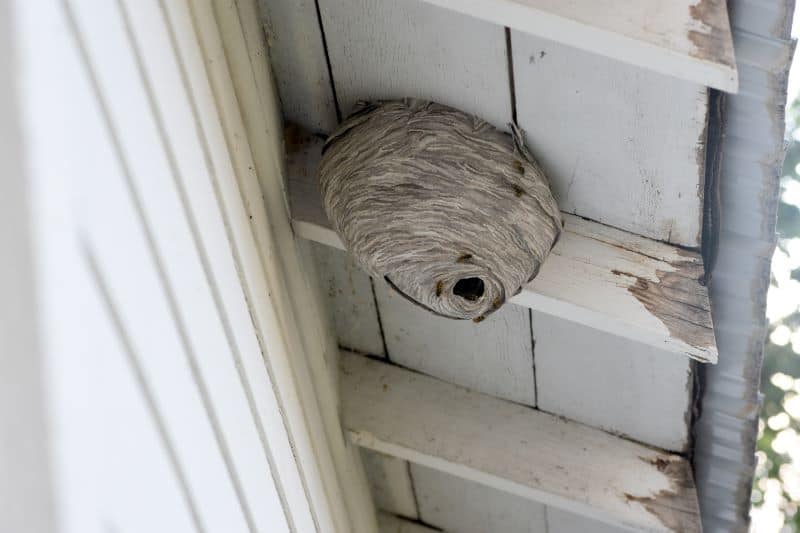Carpenter ants? Yikes! That doesn’t sound so good. And while we agree, we do want you to stay calm and know that carpenter ants, with the right know-how and professional support, can easily become a thing of the past.
In our estimation, educating our clients lies at the heart of delivering a great pest control experience. We want you to make decisions about your pest control needs with confidence, not just take action out of fear. While carpenter ants are pests that need to be dealt with swiftly and decisively, we also want you to know that you do have options when it comes to pest extermination, and that you can make more informed decisions when you better understand what these creatures are, where they came from, how they got into your home, and how you can get rid of them.
Carpenter ants — what are they?
If you’re someone who considers carpenter ants and termites to be the same creature, you are not alone. It’s an easy mistake to make. Let us tell you definitively that carpenter ants and termites are entirely different insects. One of the main differences? Well, termites actually eat wood, digesting the cellulose found therein. Carpenter ants, unlike termites, dig and burrow through wood, and do not ingest or eat it. Carpenter ants, in terms of their diet, actually feed off of smaller insects, both dead or alive, enjoy the juices of fruit and plants, and also enjoy a sweet aphid secretion that is called “honeydew.”
Though there are some 30,000 species of ants in the world, with 1,000 of those being a specific type of carpenter ant, the carpenter ants you’re most likely to see in West Linn and the greater Portland areas, are the black carpenter ant.
They are blackish and reddish in color, and are about one-quarter to one-half inch long, with the worker ants tending to measure on the longer side. Like many other species of ants, carpenter ants are social insects, living in colonies that consist of queens, workers, and males.
Carpenter ant colonies can grow very large — some colonies can feature as many as two thousand worker ants! — and because the queen carpenter ant can be quite territorial and sometimes even aggressive, it is not uncommon for smaller, subdominant colonies to exist under a larger, more dominant colony.
These colonies, often built in moist, rotting, or decaying wood, will be connected to one another via a system of tunnels established by worker ants. Each nesting site is referred to as a gallery. Sometimes, these galleries will feature neither queens nor males, populated solely by workers.
All workers have a variety of jobs that they’re responsible for, including building and maintaining nesting sites, tunnel creation, gathering, distributing, and storing food, and so on. All of this is communicated by the queen via pheromones that guide the direction of the colony.
Queens, of course, are responsible for leading the colony, laying eggs, and growing the colony. Males mate with the queen, and that’s pretty much it. Once they’ve mated with the queen, they will soon pass away.
How to know if you have a carpenter ant infestation
As we’ve established, carpenter ants and termites are distinctly different. Termites eat wood. Carpenter ants burrow through it. This detail is quite helpful in determining what type of pest infestation you’re facing.
If the insects have entered the home, look to see if you can tell where it is that they’re entering your house. If the wood you’re examining is covered with several small holes that also have a very fine sawdust near them, you’re probably dealing with carpenter ants. To be sure, we want you to contact a professional, but carpenter ants tend to be a little cleaner than termites, the latter of whom are likely to leave mud, dirt, and droppings near their entryways. Carpenter ants create smooth, clean galleries that they travel through.
Whatever the case, contact a professional, and do it as soon as you can! The longer you wait, the worse your problem is going to get. Carpenter ants aren’t typically as destructive as termites, but they can cause damage to your home if their infestation is left untreated. While they aren’t known to threaten human safety, there are cases where people have had allergic reactions to their bites. Protect the integrity of your home and the safety of your family by seeking professional support right away!
Where did the carpenter ants in my West Linn home come from?
Carpenter ants, like many insects, love moisture, so it’s no wonder that the Pacific Northwest is a thriving area for this creature. Standing water, other nuisance pests, and other similar factors like having moist or rotten wood on your property will attract carpenter ants. Similarly, if your home has wood rot or water damage, then carpenter ants may take advantage of these opportunities. Examine areas like your eaves, gutters, where plumbing enters the home, and even where potential water damage could be occurring inside the home, like bathrooms, kitchens, utility rooms, and the like to ensure you’re not inviting in pests.
The good news is that if you do have carpenter ants inside your home — most likely because they’ve gained access through rotted wood and are enjoying sugary, fatty, and protein-rich foods found in your cupboards — it’s probably just a satellite colony. It is unusual, but not impossible, for a primary colony to be found inside the home.
This can help us as professionals find the primary colony and treat accordingly. And how would you do that? By calling a team of experienced and effective professionals, of course!
How do I exterminate carpenter ants?
We’re often asked if there are off the shelf methods for treating carpenter ants. The answer is yes, but we don’t recommend them too highly. Repellent sprays appear to do the job, but they can’t reach the heart of the colony, where extermination matters most. They simply don’t work as effectively as commercial grade, non-repellent products, and we also know that having a professionally trained set of eyes treat all of the sub-colonies will result in a more desirable outcome.
At Aspen Pest Control, we’re committed to providing everyone who chooses to work with us the most thorough examination of their home and property as possible in order to achieve the outcome you’re looking for.
Our team is licensed, bonded, insured, and local. We can often provide treatment within just 2-3 business days, and we’ll always offer you same-day hassle-free consultations over the phone. We’ll never pressure you to accept our services. It’s our job to convey the value to you, provide you with informed recommendations, and, should you choose to move forward with your personalized pest extermination plan, deliver the best, most effective service possible.
If you’re concerned about carpenter ants and in need of great extermination services, then look no further. Your friends and neighbors in the West Linn area have chosen us for years as their pest control support team because we listen to your needs as carefully as we treat for pests. Isn’t that the service you deserve?








